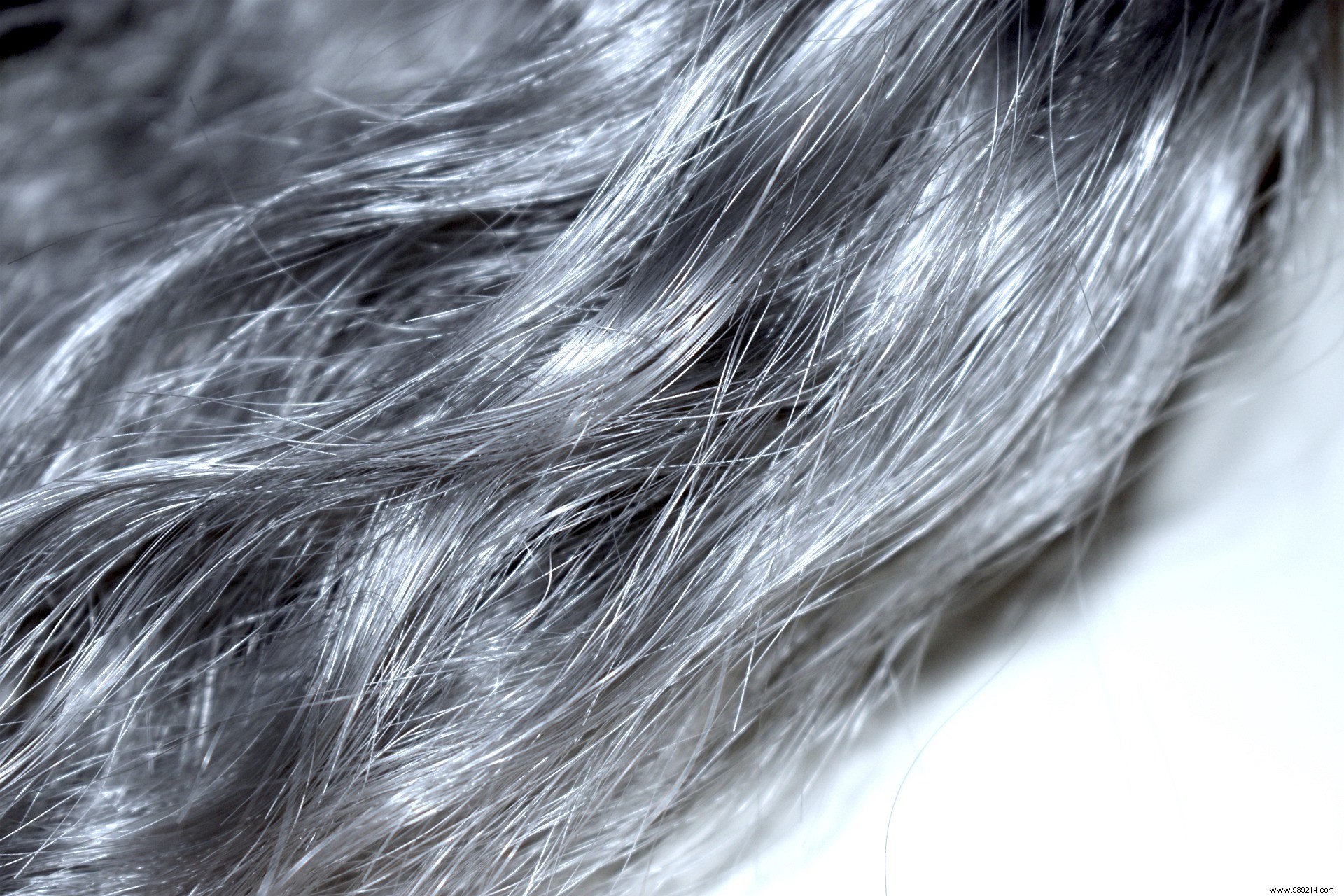A new study provides unprecedented scientific evidence supporting a link between stress and gray hair. The researchers also identified proteins that appear to drive this process. And according to them, it could even reverse.
Legend has it that Marie-Antoinette, the last queen of France, saw her hair turn completely white the night before she ascended the scaffold, on October 16, 1793. This "sudden canities" syndrome , as it is called, which is characterized by very rapid whitening of the hair, was also reportedly seen by WWII fighters. This phenomenon in particular has not been observed scientifically. On the other hand, more and more evidence suggests that stress can actually speed up the process of bleaching our hair.
The pigmentation of our hair comes from melanin (a term for dark-colored biological pigments). These pigments are produced by the granules of melanocytes in the bulb of the hair follicle, in contact with the keratinocytes, which produce the hair by multiplying. Over time, the number of melanocytes gradually decreases . In other words, there are fewer and fewer pigments available, so much so that after a while, our hair turns gray, and finally white.
However, time is not the only factor responsible for the loss of our melanocytes. In a study published in January in Nature, a team of researchers found that during severe stress, norepinephrine, a neurotransmitter in the sympathetic nervous system that plays a major role in the stress response , could be taken up by melanocyte stem cells. As a result, the melanocytes are activated and the stock reservoir of pigments tends to be depleted very quickly.
However, this work had been carried out in mice. And what happens in mice doesn't necessarily translate to humans.
In another study published a few days ago in the journal eLife, researchers at Columbia University also looked at the link between psychological stress and hair graying, this time in humans.
For this work, the scientists enrolled fourteen volunteers who were asked to keep "stress diaries". These people then provided hair samples, which the scientists cut into slices one-twentieth of a millimeter wide. Each slice was about an hour of hair growth. By analyzing them with a high-resolution scanner, the researchers have thus given themselves the means to map the degree of graying (invisible to the naked eye) on a time scale .
At the end of these analyses, the researchers did indeed highlight "striking associations between the stress events reported in the newspapers and the graying of the hair.

More surprisingly, they also reported a reversal of this graying process as stress was alleviated. Five hairs on the head of a person who went on vacation would thus have "become black again during his vacation, synchronized in time “, reports Ayelet Rosenberg, lead author of the study. Such a phenomenon had never been quantitatively documented, according to the researchers.
During this work, the scientists also measured the levels of thousands of different proteins along the length of the hair. They then identified changes in three hundred of them as the hair turned gray. Using a mathematical model, the team then linked these alterations to stress-induced changes in mitochondria .
Reducing stress might actually reverse the process of canities, but don't count on it to get your hair color back. Time is a much more formidable factor. On the other hand, subtle changes may occur in middle-aged people.
"Based on our mathematical modeling, we believe that hair must reach a certain threshold before turning gray “, notes the researcher. “In middle age, when hair is close to this threshold due to biological age and other factors, stress will push it past the threshold and it will turn gray ". If stress is reduced, it might therefore be possible to bring them back below this threshold… for a while!